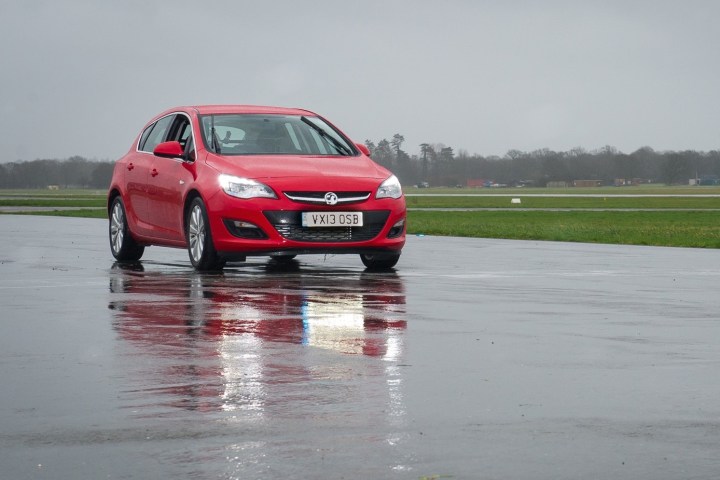
The Vauxhall Astra Tech Line that was Top Gear’s last “Reasonably Priced Car” is being auctioned off in the U.K. on eBay to benefit BEN, an automotive-industry charity. Bidding is open until December 27, and was up to £10,301 (about $15,000) at the time of publication.
That buys a compact five-door hatchback that’s been flogged by celebrities for 2,908 hard miles. The car is fairly well equipped, with features like navigation, Bluetooth, a USB port, and iPod connectivity, as well some non-factory equipment like Corbeau racing seats, five-point safety harnesses, and a roll cage. Under the hood is a 1.6-liter four-cylinder engine, producing a mighty 115 horsepower.
What the Astra Tech Line doesn’t have is a set of functioning airbags. They were disabled to make room for the roll cage, so the car can’t be driven on public roads. That’s doubly true for any buyers thinking of shipping this chunk of memorabilia to the U.S. While it is a General Motors product, the Astra (which is sold as an Opel in continental Europe) isn’t certified for sale here. Unless you’re a mail carrier, the right-hand drive would probably be confusing, anyway.
Part of the spectacle that was Top Gear under Clarkson, Hammond, and May, the “Star in a Reasonably Priced Car” segment featured celebrities competing to the fastest lap time in some decidedly downmarket vehicles. The Astra was preceded by a Suzuki Liana, Chevrolet Lacetti, and Kia Cee’d (the Liana and Lacetti were sold here as the Suzuki Aerio and Forenza, respectively). It was driven by the likes of Ron Howard, AC/DC’s Brian Johnson, Steven Tyler, and Benedict Cumberbatch during its short career.
After Clarkson was fired for punching a producer and Hammond and May quit in solidarity, the BBC opted to reboot Top Gear with Chris Evans. The show is expected to return in May, although there’s no word on whether “Star in a Reasonably Priced Car” will continue. Meanwhile, the three former hosts will start their own Amazon-backed car series.


